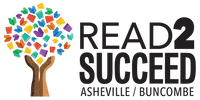The Read To Succeed Method
|
Historically, reading instruction in North Carolina schools has relied on whole language - an approach based on unstructured immersion, simple printed texts and reading aloud. With this method, children must make an associative leap from knowing the alphabet to being able to read whole words. This is an effective method for children from high literacy households where reading materials and oral communication are abundant. However, many children are challenged by the unstructured immersion approach, and they are at a reading disadvantage before they even enter public school.
R2S emphasizes phonics, which creates the foundational structure for children to acquire skills necessary to read and write proficiently. With phonics, children learn the sounds of individual English letters, followed by the sounds of letter combinations, and finally, how to combine sounds to form syllables. Syllables combine to form words, and words into sentences. Research shows that "when provided systematically, phonics instruction helps many children learn to read more effectively than does non-systematic instruction or instruction without phonics" (Ehri, Nunes, Stahl & Willows, 2001). |
Our curriculum follows the Orton Gillingham approach, and uses a variety of sensory tools to reinforce phonics-based instruction. Smooth, colorful "jewels" represent the individual sounds of simple words, soft puff balls are exchanged as syllables are identified in more complex words. Glitter glue outlines large letters for tactile tracing and students can be seen traversing school halls waving their arms to "air spell" sight words. Songs and rhymes support spelling rules and games like Tic Tac Toe make sight word spelling fun. In fact, a 45-minute coach/student session can easily move from deep concentration to silly giggles and back again.
|


